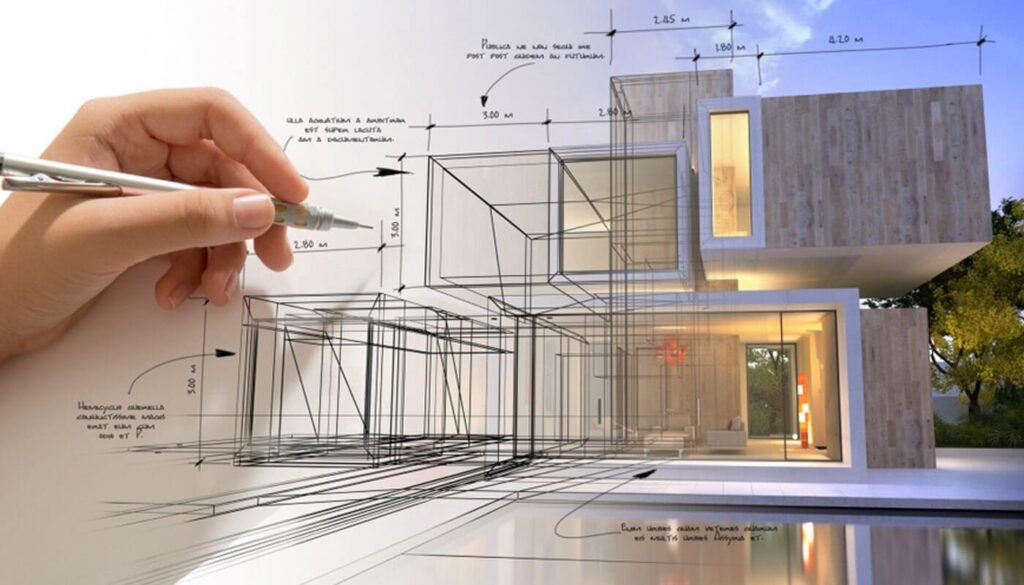Boost Your Structure Style with the Experience of CDA Architects
Boost Your Structure Style with the Experience of CDA Architects
Blog Article
A Detailed Introduction of Building Designs and Their Impact on Modern City Planning and Growth
Architectural styles have actually long served as a mirror to the societal worths and technological advancements of their time, playing a vital duty in forming contemporary city preparation and advancement. From the magnificence of Neoclassicism to the practical strategy of Brutalism, each style has actually presented one-of-a-kind ideas that affect city aesthetics and performance.
Historical Introduction of Building Styles
Throughout history, architectural designs have actually developed in reaction to social, technical, and ecological aspects. Each period mirrors the dominating values, ideas, and developments of its time, bring about an abundant tapestry of design that indicates human imagination and adjustment. The ancient civilizations, such as the Egyptians and Greeks, established fundamental designs that highlighted proportion and proportion, offering both useful and visual purposes.
As cultures transitioned with the Middle Ages, Gothic architecture emerged, identified by its verticality and detailed detailing, matching the spiritual ambitions of the period. The Renaissance noted a resurgence of classical perfects, combining art and style in ingenious manner ins which influenced succeeding styles throughout Europe.
The Industrial Revolution presented brand-new materials and construction strategies, triggering movements like Innovation, which tested standard types and welcomed simplicity and capability. The 20th century saw a diversity of styles, with Postmodernism responding against the raw minimalism of its precursor, including historical references and eclectic elements.
Today, architectural designs continue to develop, driven by globalization and sustainability problems, showing a dynamic interplay in between heritage and advancement. This historic review emphasizes the importance of design as a mirror of societal evolution and as a stimulant for city growth.
Secret Architectural Styles Explained
The diversity of building designs reflects the myriad influences that shape our developed environment, each personifying distinctive characteristics and cultural significances. Key building styles consist of Timeless, Gothic, Baroque, Innovation, and Postmodernism, each representing one-of-a-kind historic contexts and visual viewpoints.
Timeless design, rooted in ancient Greece and Rome, emphasizes proportion, proportion, and making use of columns. On the other hand, Gothic style, growing in the Center Ages, is identified by pointed arches, ribbed vaults, and flying buttresses, creating an ethereal quality in sanctuaries. Baroque design, emerging in the 17th century, is marked by magnificence, fancy decoration, and a vibrant interaction of light and darkness.

Understanding these styles gives insight into the social stories and technological developments of their respective periods, highlighting just how style serves not equally as a shelter, yet as a representation of social values and desires.
Influence On Urban Planning
In forming the growth of cities, building styles significantly influence city planning decisions. The selection of building design typically dictates the aesthetic appeals, functionality, and overall personality of metropolitan environments.
In addition, architectural designs can impact zoning laws and land utilize policies. Urban organizers have to consider the dominating architectural trends when developing areas, ensuring that new growths integrate with existing structures. This consideration cultivates cohesive city landscapes and improves community identification.
The execution of details architectural styles can likewise influence socioeconomic factors within a city. Premium contemporary designs might bring in affluent locals and services, leading to gentrification, while a lot more budget-friendly housing remedies could focus on functional and lasting styles to fit diverse populaces. Ultimately, the interplay in between building designs and metropolitan planning creates vibrant cities that show both historical context and contemporary needs, forming the lived experiences of their citizens.
Sustainability and Modern Style
Architectural styles play a pivotal duty in addressing modern obstacles, especially in the realm of sustainability. As urban locations broaden and environmental concerns escalate, contemporary design increasingly embraces lasting design concepts that focus on energy performance, resource preservation, and marginal environmental impact.
Contemporary building motions, such as biophilic layout and environment-friendly design, supporter for structures that harmonize with their environments, using natural products and promoting biodiversity - cda architects. These designs frequently include renewable resource resources, such as solar panels and wind generators, to minimize reliance on nonrenewable fuel sources and lower carbon impacts
Moreover, the combination of advanced innovations, such as clever building systems, enhances power monitoring, optimizing resource use while ensuring passenger convenience. Ingenious water administration methods, including rain harvesting and greywater recycling, additional add to sustainable urban environments.
Significantly, sustainability extends beyond ecological concerns; it includes social and financial measurements as well. By cultivating area wellness and advertising inclusivity, modern-day architectural styles line up with sustainable development goals. The development of building techniques proceeds to form resistant cities that not only fulfill the demands of the existing yet additionally safeguard the future for generations to come.
Community Engagement in Design
Area involvement in layout acts from this source as a vital bridge in between engineers and the populaces they offer, ensuring that the developed click here for more info atmosphere shows the needs and goals of its users. This collaborative process welcomes area participants to add their insights and preferences, fostering a feeling of possession and obligation toward the spaces they inhabit.
Effective area engagement employs numerous techniques, such as workshops, surveys, and public forums, to collect varied point of views (cda architects). These methods facilitate a two-way discussion, enabling architects to recognize neighborhood contexts while equipping residents to articulate their worries and desires. This inclusivity not just improves the design quality yet likewise advertises social equity by resolving the distinct challenges encountered by marginalized groups

Conclusion
Architectural styles have greatly affected modern city preparation and advancement, showing evolving social and technical contexts. As cities continue to expand and adapt, the recurring discussion check this between building heritage and modern-day design concepts will remain essential in producing comprehensive, vibrant rooms that improve quality of life and advertise social equity.
Report this page